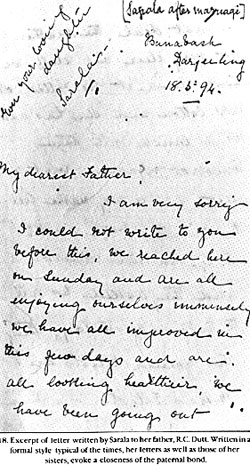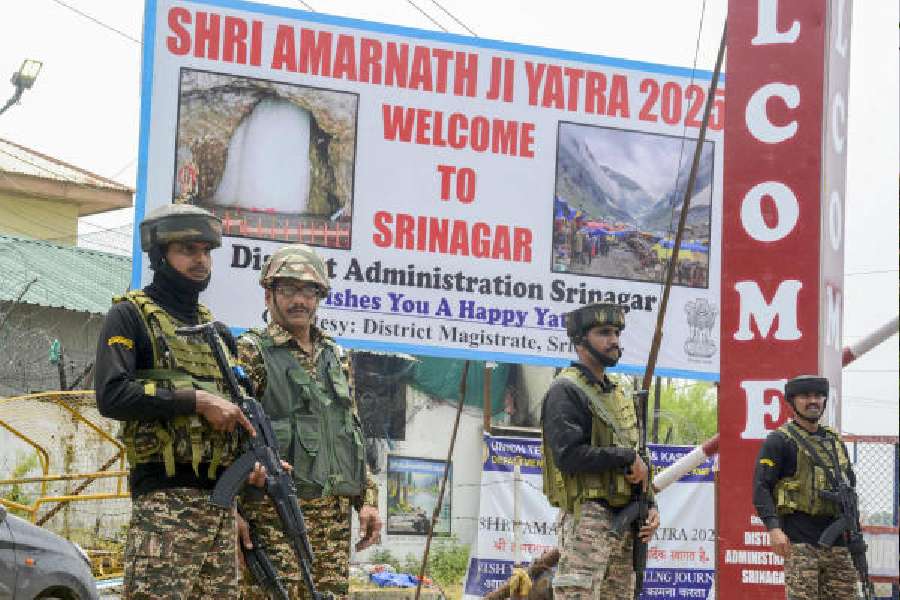|
|
Amartya Sen?s The Argumentative Indian is a civilized polemic about India; and it raises certain questions. For me, the most interesting of them is the implicit one: what need does the appearance of this book respond to, in writer and reader? This most banal of questions seems to lead to a (for me, at least) crucial discussion on culture.
Many of the facts and citations that Sen marshals towards his polemic would, indeed, be familiar to people acquainted with studies of Indian culture and history; but the moment and manner of the polemic make it unusual. It?s directed, mainly, against two views of India, views that might seem remotely connected to each other, or even adversarial. Both emphasize ? even invent ? an Indian synonymous with religion, magic, antiquity, ?spirituality?, the irrational, the non-modern. The first of these views has a powerful and venerable history; it?s the principal Western perception of India, and that perception, even when it?s an empathetic one, begins and ends with India?s spiritual significance. With imperialism, the perception becomes a justification ? to differentiate the conquered from the conqueror as being less rational, less capable of individual and independent action, less intrinsically free.
The second view that Sen?s concerned with has made a relatively recent appearance, although its hidden history in India is a long and troubled one. Sen points out that this second view, which has to do with the invention of a particular India by right-wing Hindus (represented by the BJP and ancillary political organizations like the RSS), bears a striking resemblance to the Western invention, notwithstanding the BJP?s strident and melodramatic nationalism. The BJP?s interpretation or vision of Hinduism ? Hindutva ? is political and emotional, but owes hardly anything to traditions of rationality.
Sen?s purpose is to remind us that the democracy and the secular inheritance we value in India today are not an accident, and neither are they merely a gift from the West; nor are they, on the other hand, something that an idealized Hindu identity needs protection from. Towards the middle of the book, Sen addresses both the Western misrepresentation and the Hindu mystification, and the point at which these antithetical streams unexpectedly flow into each other: ?The special characteristics of Western approaches to India have encouraged a disposition to focus particularly on the religious and spiritual elements in Indian culture. There has also been a tendency to emphasise the contrast between what is taken to be ?Western rationality? and the cultivation of what ?Westerners? would see as ?irrational? in Indian intellectual traditions. While Western critics may find ?anti-rationalism? defective and crude, and Indian cultural separatists may find it cogent and penetrating (and perhaps even ?rational? in some deeper sense), they nevertheless agree on the existence of a simple and sharp contrast between the two heritages. The issue that has to be scrutinised is whether such a bipolar contrast is at all present in that form.?
For Sen, the ?bipolar contrast? is a construct that?s circulated widely in the academic, political, and popular imagination, but which doesn?t bear close examination. India, says Sen, has a long, even pioneering, tradition of argumentation, scientific achievement, secular debate, free thinking, scepticism. It?s a tradition in which, for example, its democracy, its freedom struggle, its intellectual and cultural developments in the last two hundred years, and, by implication, Sen?s own trajectory from economist to public intellectual ? an archetype of the rational, argumentative Indian modern ? need to be placed.
Sen, of course, is not alone among Indians in espousing the secular, the rational, the ?high? cultural: indeed, enlightenment values and a humanist vision of the world in general, and of India in particular, have accompanied and indelibly shaped the growth and formation of the Indian middle class from the early 19th century onward. The humanist discourse (for the want of a better word) has been, by common consensus, the elite discourse in India; and it?s against it that, on the one hand, raw, emotive, right-wing critiques like Hindutva have been raised, and, on the other, as Sen notes, critiques such as Subaltern Studies ? which traces the itinerary of the Indian peasant ? whose provenances are Gramscian, and belong to the left. The political expression of this modernist, enlightened humanism is usually referred to by the catch-all term ?Nehruvian?, although it doesn?t by any means emanate from Nehru alone; it would be as much a mistake to identify that political temper with a single figure, despite Nehru?s personal vision of his country, as it would to reduce the Elizabethan age to Elizabeth I. For the philosophical underpinnings and the first explorations of the basis of that humanism we need to go back further to the late 18th century, to the polyglot scholar, Raja Rammohun Roy, who, in taking issue both with Brahmin orthodoxy and Christian missionaries, ?made in two decades?, as the historian C.A. Bayly has said, ?an astonishing leap from the status of a late-Moghul intellectual to that of the first Indian liberal?, and who ?independently broached themes that were being simultaneously developed in Europe by Garibaldi and Saint-Simon?.
But if the discourse of modernity and of the human has been the elite discourse in India for almost two centuries, this elitism and hegemony are rather unusual in that they appear to have no official intellectual or existential expression, no central texts. This discourse has been translated into policy, statecraft, and institutional practice, into democracy, free speech, and ideas of social equality, and its most eloquent author and guarantor is the Constitution; it?s observable as the context in which not only political activity, but the growth and development of literatures, the writing of histories, the creation and contestation of meanings, have taken place since the early to mid-19th century. Yet, if one were to turn to look toward a body of work, or a single significant statement, for a full-blown genealogy and definition of the human in India, and, especially, its cognitive basis, we wouldn?t find a great deal.
It?s fine to deconstruct or historicize that cognitive basis ? what it means to be, to think and feel as, a modern and an Indian ? by placing it in its social and institutional contexts, but only when we have a thorough idea of what it is, or at least more than the dim and generalized sense we have of it now. Indeed, it?s likely that we?d get a more vivid idea of the Indian modern in critiques of Indian modernity, in the works of, say, Ashis Nandy or the Subaltern Studies historians, than in its own putatively formative domain. Or we might agree that such a thing as Indian modernity, with its notions of rationality, science, authenticity, and ?high? culture, existed by arriving at it by a process of elimination: very large areas of Indian history in the last two centuries will simply not fit comfortably into a category such as, for instance, ?post-colonial?.
The filmmaker, Satyajit Ray, watching Kurosawa?s Rashomon for the first time in Calcutta, noted in startlement that a work or sensibility of such sophistication couldn?t be a one-off or a freak occurrence; that it must emerge from a culture ?fully formed?. We might say the same of any Indian modern, including Ray. And yet our canonical sense of the ?fully formed? cultural history ? compared to, say, that of European or American modernity ? in which we must locate the modern Indian self and its impulses is relatively poor, notwithstanding salutary overviews undertaken recently by the likes of C.A. Bayly, Sugata Bose and Ayesha Jalal. A somewhat odd hegemony, then ? what makes Indian modernity, especially its subjective space, so elusive?











